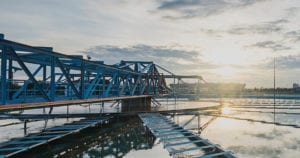This audio was created using Microsoft Azure Speech Services
Water is as abundant as it is scarce! Of all the water available on earth, more than 99% is unusable by humans. Therefore, how we manage the usable part of this crucial planetary commodity is what determines its sufficient availability or the severe lack of it.
Water is a basic necessity of life and our most important physical resource. Groundwater is the main source of water for our drinking needs. As we pump more and more of this water for our increasing needs, groundwater levels start declining.
The problem we face today is we are pumping more water and faster than it takes groundwater to replenish itself. Water tables in many regions of the world are dropping rapidly, as human habitations drain aquifers for industry, agriculture, and other purposes. To add to our water woes, pollution of our water bodies and climate change are acutely compounding an already complex crisis.
As cities expand and urbanization escalates, water has to be supplied optimally. In this context, Water Solutions assume enormous importance as they deal with disparate aspects of water and wastewater management – water treatment, water quality, water pumping, water transportation, water measurement and billing, wastewater collection and so forth.
Electricity is a critical input for delivering municipal water and wastewater services. Electricity costs are usually between 5 to 30 percent of total operating costs among water and wastewater utilities (WWUs) worldwide. The share is usually higher in developing countries and can go up to 40 percent or more in some countries, such as India and Bangladesh. Such energy costs translate into high and often unsustainable operating costs, which directly affect the financial health of WWUs, puts strains on public/municipal budgets, and can increase tariffs on their customer base. Excerpt from a World Bank White Paper: “A Primer on Energy Efficiency for Municipal Water and Wastewater Utilities”, Energy Sector Management Assistance Program (ESMAP) of World Bank
Water solutions in a sprawling urban agglomeration means continuous and controlled operations of:
• Elaborate systems like water treatment, sludge treatment, biological treatment etc.
• Extensive networks like pumping stations, consumption points, wastewater collection etc.
• Complex processes such as distillation, desalination, filtration etc.
Managing water management systems and processes requires high levels of:
• Coordination between remote locations
• Availability and performance
• Integration of power and control solutions
• Compliance to regulatory framework
For water solutions to run efficiently, a comprehensive electrical and electronic infrastructure has to be in place:
• MV and LV Electrical Distribution
• Critical Power to ensure system availability
• Telemetry System to remotely manage the network of stations
• Programming and Automation solutions to ensure quality levels
• Distributed Control Architectures with connectivity
• Software and SCADA tools
• Energy Cost Optimization with Power Factor Correction and Diagnostics
Therefore, how smartly water infrastructure is managed determines how efficiently water is being made available to all its consumers – day in and day out, over and over again. Needless to say, we need to adopt the best methods to make the best of AVAILABLE water.



Conversation
O'Brien Uzoechi
11 years ago
One of the cardinal goals of beamaque water is sustainable water production and services to customers. For some time now, the United Nations have been hammering on the 2030 water scare, which ultimately mandates every stakeholder on sustainable use of our water resources to stymie its untimely depletion.
And now, there is a linking of sustainable energy efficiency to water utility sustainability. This purely points to more prudential and future-thinking attitude in harnessing and utilizing our endowed natural resources.
Eshwar Nurani-Parasuraman
11 years ago
Thanks O’Brien!
You’re right. It’s crucial to link sustainable water use with sustainable energy efficiency. The galloping demands of development have made sustainable use and management of water high priority areas. The 2030 scare is no rhetoric, it’s already beginning to take shape as a reality. Water sustainability is no longer an option, it is an obligation that needs to be legally enforced.